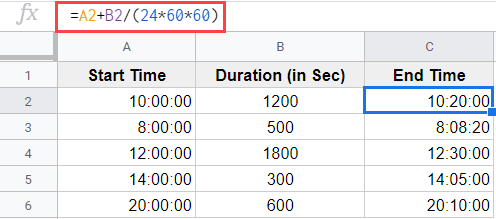Google Sheets is a powerful tool that allows users to organize and analyze data in a spreadsheet format. If you’ve been using Google Sheets for a while, you may have come across the ‘$’ symbol in the main menu or noticed it inserted in formulas. In this guide, we will explore the meaning of the ‘$’ symbol in Google Sheets and how to use it effectively.
When working with numerical data in Google Sheets, it’s important to distinguish currency values from other numbers. To avoid confusion, you can use the currency sign (‘$’) to indicate that a number should be treated as a currency. However, manually inserting the symbol every time you need it can be time-consuming. That’s where the ‘$’ symbol in the menu comes in handy.
By clicking on the ‘$’ symbol in the menu, you enable the currency option. This means that any number you enter after enabling this option will be treated as a currency. This is especially useful when dealing with multiple numbers across cells, as you can easily convert them into currencies without the need to manually insert the symbol each time.
Number Formatting in Google Sheets
In addition to the ‘$’ symbol in the menu, Google Sheets offers various number formatting options that allow you to customize how numbers are displayed in your spreadsheet. One of these options is the dollar symbol formatting. When you navigate to the “Custom number format” section, you will find the dollar symbol as one of the available formatting options.
By selecting the dollar symbol formatting option, all numbers in your spreadsheet will be displayed with the appropriate currency symbol, even if you haven’t explicitly added the ‘$’ symbol before. This can be particularly useful when working with large datasets or when you want to ensure consistency in displaying currency values throughout your spreadsheet.
Understanding the ‘$’ Symbol in Formulas
When working with formulas in Google Sheets, you may encounter situations where you want certain variables to remain constant while others change. The ‘$’ symbol, also known as the absolute reference, allows you to achieve this control over your formulas.
For example, let’s say you want to multiply the values from two different cells. You would typically write something like this: ‘B1*C1’. If you copy this formula to another cell, the references will update automatically. However, there may be cases where you want to keep certain variables fixed, and that’s where the ‘$’ symbol comes into play.
There are three different methods for using the ‘$’ symbol in formulas:
1. Placing the ‘$’ Symbol on the Right
If you want to keep the row fixed while copying the formula to other cells, you can place the ‘$’ symbol on the right side of the cell reference. For example, if you want to fix the row while allowing the column to change, you would write ‘$B1’. This ensures that when you copy the formula to other cells, the row reference will remain the same, while the column reference will update accordingly.
2. Placing the ‘$’ Symbol on the Left
Conversely, if you want to keep the column fixed while copying the formula, you can place the ‘$’ symbol on the left side of the cell reference. For example, if you want to fix the column while allowing the row to change, you would write ‘B$1’. This ensures that when you copy the formula to other cells, the column reference will remain the same, while the row reference will update accordingly.
3. Using Double ‘$’ Symbols
If you want both the row and the column to remain constant, you can use double ‘$’ symbols in the formula. For example, writing ‘$B$1’ ensures that both the row and the column will stay the same, regardless of where you paste the formula. This is particularly useful when working with absolute references that should not change.
Other Useful Google Sheets Formulas
In addition to the absolute reference formula, there are several other formulas in Google Sheets that can simplify your data analysis and manipulation tasks. Let’s explore some of the commonly used formulas:
1. Changing References to Absolute Using Shortcuts
Did you know there are shortcuts to quickly change the references from relative to absolute without typing the ‘$’ symbol? If you’re using Windows, you can press the ‘F4’ key to toggle between relative and absolute references. Mac users can simultaneously press ‘F4’ and ‘Fn’ to achieve the same effect. This shortcut can save you time and streamline your formula creation process.
2. Array Formula
An array formula is a powerful tool when working with larger datasets in Google Sheets. It allows you to perform calculations on multiple cells at once and automatically updates as new data is added. To use an array formula, simply enter the formula as you would for a single cell, but instead of pressing Enter, use Ctrl + Shift + Enter to apply it to the entire selected range.
For example, if you want to multiply the values in cells C5 and D5 and apply the formula to the entire C and D columns, you can use an array formula. Enter the formula ‘=C5*D5’ in the first cell of the desired range, and then press Ctrl + Shift + Enter. The formula will automatically apply to all the cells in the range, dynamically updating as you add new data.
3. Various Uses of the ‘$’ Symbol
As we’ve discussed earlier, the ‘$’ symbol can represent currency and be used in formulas for absolute referencing. Additionally, there are other functions where the ‘$’ symbol is used in Google Sheets. Some of these functions include:
- VLOOKUP: The ‘$’ symbol is used to fix the column reference in the lookup range while allowing the row reference to change. For example, ‘=$A$1:$B$10’ will fix the column range from A to B while allowing the row range to update.
- INDIRECT: The ‘$’ symbol is used to fix the cell reference in the INDIRECT function. For example, ‘=INDIRECT(“$A$1”)’ will always refer to cell A1, regardless of where the formula is located.
- Conditional Formatting: When applying conditional formatting rules in Google Sheets, the ‘$’ symbol can be used to fix a specific cell reference to apply the formatting consistently across the entire range.
Conclusion
Understanding the meaning and usage of the ‘$’ symbol in Google Sheets is essential for effective data analysis and manipulation. Whether you need to indicate currency values, create formulas with absolute references, or apply various number formatting options, the ‘$’ symbol plays a crucial role in optimizing your workflow.
By utilizing the currency option in the menu, customizing number formatting, and mastering the absolute reference formula, you can enhance your Google Sheets skills and make your spreadsheet work more efficient and accurate. Additionally, exploring other useful formulas like array formulas and various functions that involve the ‘$’ symbol can further expand your capabilities in Google Sheets.
Remember to experiment with these features and formulas in your own Google Sheets projects to gain hands-on experience and discover new ways to streamline your data analysis tasks. With practice, you’ll become proficient in leveraging the power of the ‘$’ symbol and other advanced features in Google Sheets to unlock the full potential of your spreadsheet projects.







